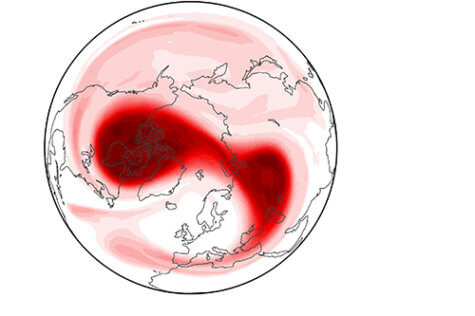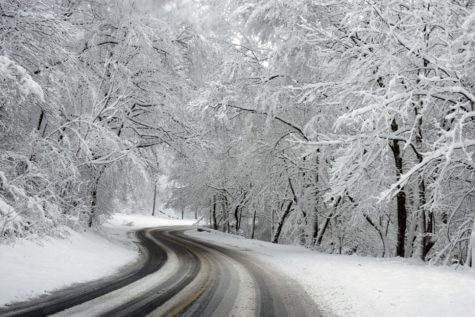BRISTOL, United Kingdom — Much of the world may be in store for particularly intense winter weather in the coming weeks, according to a study just released by a team in the United Kingdom. Researchers report a major meteorological event is occurring high in the sky above the North Pole.
This sudden stratospheric warming (SSW) event is estimated to occur in early January 2021. What exactly does that mean? The Earth’s stratosphere is a layer of the atmosphere located around six to 30 miles above the ground. Scientists consider an SSW event to be among the most extreme atmospheric phenomena. It usually leads to an atmospheric temperature increase of roughly 122 degrees Fahrenheit within just a few days!

(Credit: University of Bristol)
SSW events are known to subsequently produce periods of extreme cold weather and intense snow storms. Most recently, an SSW in 2018 called the “Beast from the East” brought heavy snowfall to the United Kingdom, Ireland, and much of Europe.
Why does heating in the atmosphere lead to winter weather?
If that hot air in the stratosphere shoots downward and makes its ways to the planet’s surface, a shift in the jet stream occurs, sparking extremely cold temperatures across Europe and Northern Asia. As far as when that occurs, the timeline can vary significantly. Sometimes the hot air takes weeks to reach the surface, but in other instances, it arrives within a few days.
Researchers analyzed 40 prior SSW events taking place over the past 60 years. The team also developed a way of tracking the signal of an SSW downward from the sky to the surface.
Where is the ‘beast’ heading?
Study authors say regions like Siberia and northwest Europe are at an elevated risk of extreme winter weather and snowstorms in the coming weeks.
“While an extreme cold weather event is not a certainty, around two thirds of SSWs have a significant impact on surface weather. What’s more, today’s SSW is potentially the most dangerous kind, where the polar vortex splits into two smaller ‘child’ vortices,” says lead study author Dr. Richard Hall from the University of Bristol in a release.
“The extreme cold weather that these polar vortex breakdowns bring is a stark reminder of how suddenly our weather can flip. Even with climate change warming our planet, these events will still occur, meaning we must be adaptable to an ever more extreme range of temperatures,” adds Bristol’s Dann Mitchell, an associate professor of atmospheric science.
“Our study quantifies for the first time the probabilities of when we might expect extreme surface weather following a sudden stratospheric warming (SSW) event. These vary widely, but importantly the impacts appear faster and stronger following events in which the stratospheric polar vortex splits in two, as is predicted in the currently unfolding event. Despite this advance many questions remain as to the mechanisms causing these dramatic events, and how they can influence the surface, and so this is an exciting and important area for future research,” concludes study co-author Dr. William Seviour from the University of Exeter.
The study is published in the Journal of Geophysical Research.
